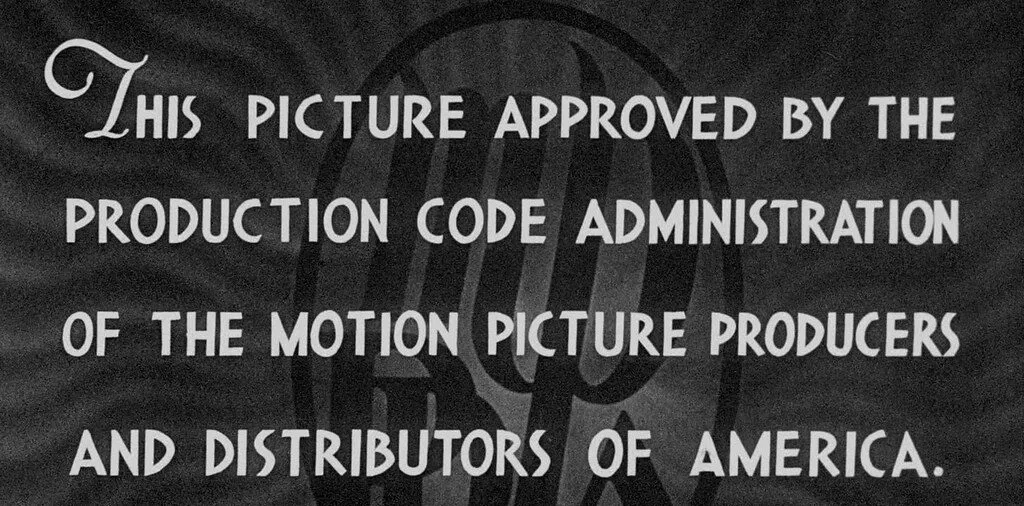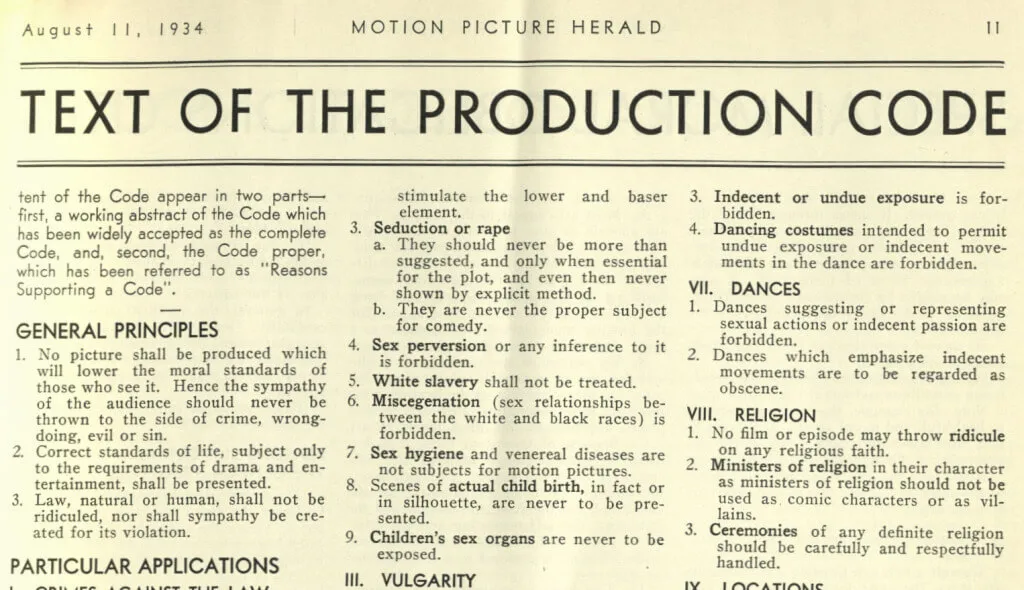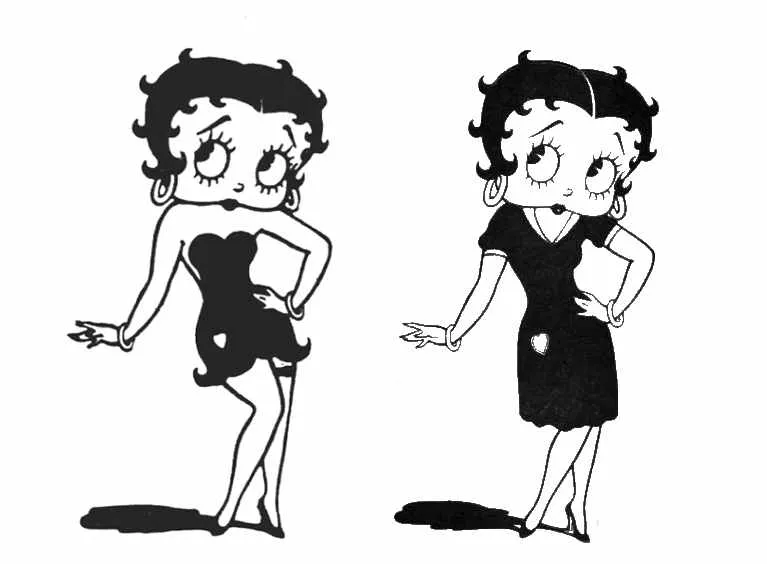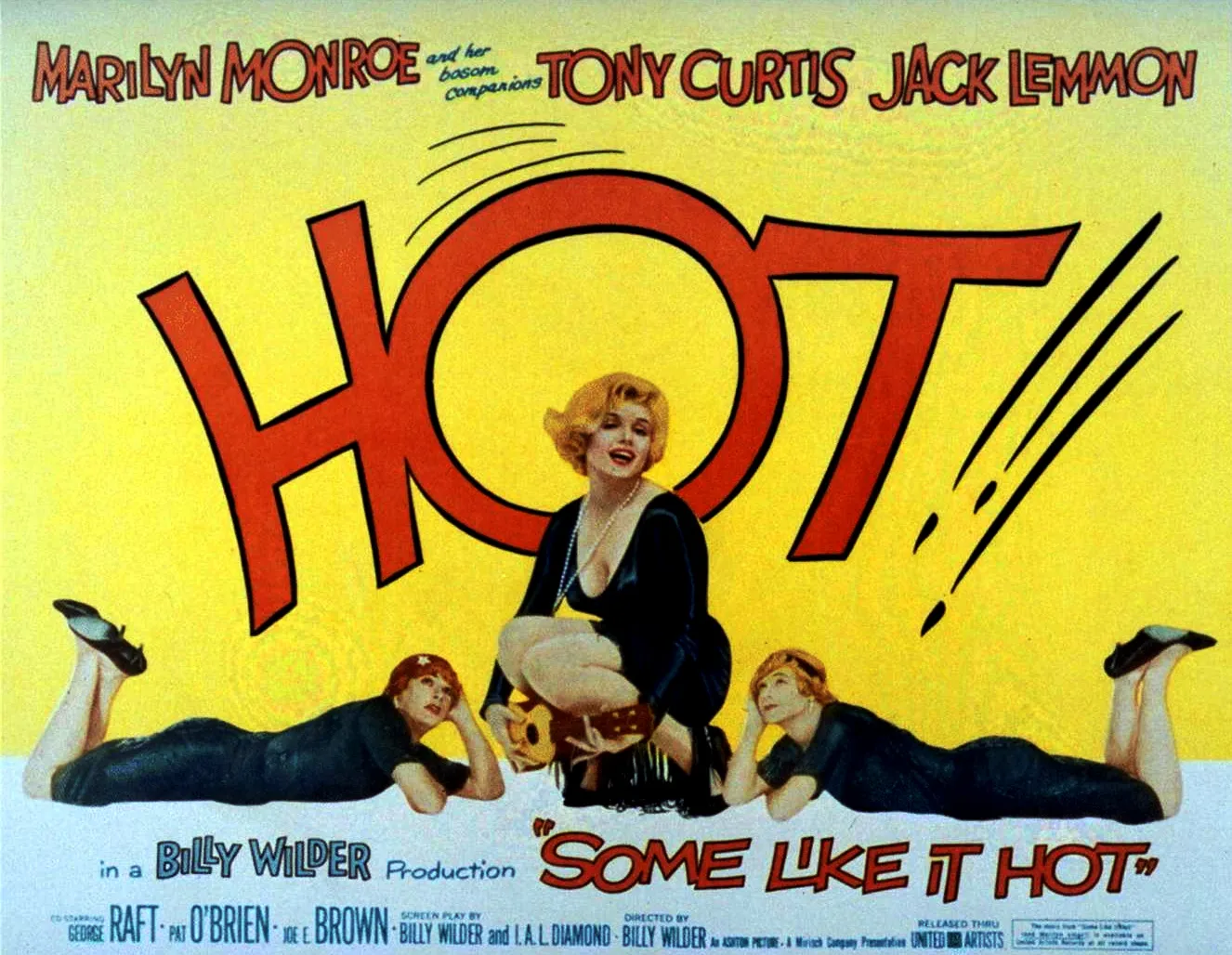
What Is the Hays Code — The History Behind Hollywood’s Self-Censorship
Try to think of a Hollywood film featuring no violence, guns, drugs, sex, affairs, or kisses. Sounds quite difficult, doesn’t it? But in the 1930s Hollywood, this wouldn’t be much of a challenge, thanks to the Motion Picture Production Code, also known as the “Hays Code.”
Published in March 1930, the Code would shape American cinema for over three decades. But how did studios move from the libertine social attitudes of the 1920s to a strict form of self-regulation?
Why Was the Code Created?
Hollywood in the 1920s was rocked by a series of off-screen scandals that brought widespread condemnation from various religious and political groups. The murder of the famous film director William Desmond Taylor, which led to a frenzy of sensationalist newspaper reports and the alleged rape and murder of the silent film actress Virginia Rappe by the popular movie star Roscoe “Fatty” Arbuckle were just some of the scandals that tarnished Hollywood’s reputation.
In 1921, almost 100 movie censorship bills were introduced in Congress. With political pressure increasing, studios were faced with two choices: either to comply with hundreds of decency laws or self-regulate to be able to show their movies. To avoid direct government intervention, the Motion Picture Producers and Distributors of America (MPPDA) created the Hays Code.
What Was the Content?
First of all, the Code prohibited a picture from “lowering the moral standards of those who see it.” It called for depictions of the “correct standards of life” meaning that even when sexual relations outside marriage were presented, they shouldn’t look permissible in any way.

Hays Code, 1934 (studiobinder.com)
Any sexual act considered perverted, including same-sex relationships, sex, or romance, was also forbidden. Homosexuals were de facto included under the proscription of sex perversion. As films could not feature homosexual characters, homosexuality was coded into a character’s behaviours.
When Was the Code Enforced?
When the Code was first introduced, it was mocked by industry insiders. However, things changed in 1934, when the American Bishops of the Roman Catholic Church organised the Catholic Legion of Decency, with the support of Jewish and Protestant Organisations, and started calling for boycotts of films deemed as unacceptable.
In 1934, the Production Code Administration (PCA) was established, which required all films to obtain a certificate of approval before being released. Joseph I. Breen was appointed head of the PCA. Under Breen’s leadership, the code was enforced zealously.
According to cultural historian Thomas Doherty, Breen dictated “final cut” over more movies than anyone in the history of American cinema. His editorial decisions influenced the images and values projected by Hollywood during the Great Depression, World War II, and the Cold War.

Betty Boop before and after the Hays Code. (bettyboop.fandom.com)
Profanity, implication of prostitution, drug addiction, nudity, sexually suggestive dancing, and costumes were all ruled out. Even the cartoon character Betty Boop was transformed from being a flapper into a full-blown housewife who baked and scolded her son for staying up past his bedtime.
Did Everyone Follow the Rules?
During the 1950s, the power of the Code started to crack as the studio system fell out of power. Many directors like Otto Preminger released their films without PCA’s approval, and the films went on to be a huge success. Even Billy Wilder’s Some Like It Hot (1959) wasn’t approved by the PCA, but went on to be a huge success and is seen as a comedic classic today.

Billy Wilder’s Some Like It Hot wasn’t approved by the PCA, but went on to be a huge success. (indiewire.com)
By the late 50s, the industry was faced with two major competitive threats: television and foreign films, which were not bound by the code. Once studios were no longer permitted to own theatres, cinemas were free to show whatever they wanted, including unapproved foreign films. Breen had retired in 1954 and the Sexual Revolution of the 1960s meant audiences were more open to topics that had been previously thought of as vulgar.
When Was Hays Code Abandoned?
By the late 1960s, enforcement had become very difficult and studios started looking to replace the Code in favour of a classification system. This classification system would come to be known as the MPAA’s film rating system.
The rating system had four rating tiers: G for general exhibition (all ages), M for mature audiences (people over the age of 12), R for restricted (children under 16 must be accompanied by an adult), and X for extremely graphic (only people 18 or over will be admitted). The ratings changed slightly over the years, but they’re still the norm in the industry.
Read also: